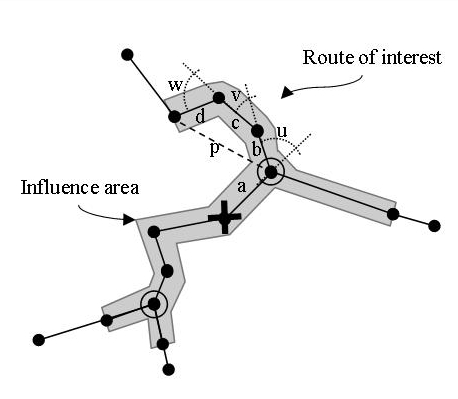Effect of road bendiness on traffic crashes
Where presented / published:
IPENZ Transportation Conference 2007, Tauranga
Abstract
This paper summarises the findings of a comprehensive study of the effects of road network bendiness on traffic crashes that used GIS (geographical information system) analysis (Fowler MET thesis 2007). The study was based on previous research that examined the effect of road network bendiness on crash occurrence at a TLA level of aggregation (Haynes et al. 2007b). It was assumed that the bendiness measures used by Haynes et al (2007b) would be more appropriate for predicting crash occurrence, and more useful from a traffic engineering viewpoint, when applied to localised regions. Thus a more appropriate method is presented and illustrated by a case study of New Zealand fatal traffic crashes.
The crash data consisted of the 4,019 fatal crashes that occurred on New Zealand roads in the period 1996 to 2006. Sample sets of randomly selected non-crash sites on the road network were also analysed for comparison. The bendiness measures analysed were: bend density (number of bends per km); detour ratio (ratio of actual distance travelled between junctions to straight line distance); cumulative angle (degrees per km); mean angle (degrees); and standard deviation of angles. These were applied to areas of influence extending to 1 km of travel around each site. Rural and urban environments were analysed separately as it was considered that the two cases would be significantly different.
Many factors complicated attempts to apply the bendiness measures at crash locations. It was difficult to infer the effects of the road travelled on driver behaviour given that the routes taken leading up to crash locations were unknown. Sample sets of flow data were used in some regions to infer likely routes taken. The remaining data was simply weighted according to the number of alternative routes; this proved effective for situations with low variability of flow on surrounding roads.
Binary logistic regression models were developed for both the rural and urban situations to predict the probability of a crash occurring on a section of road with certain bendiness characteristics. The urban model developed did not have a significant goodness-of-fit and so was not discussed further in this paper. It was found that rural roads with numerous but consistent bends were safer than completely straight roads or large individual curves, which indicates that bendiness is a protective quality as long as design consistency is maintained.
Links to the paper and the presentation are available here.





